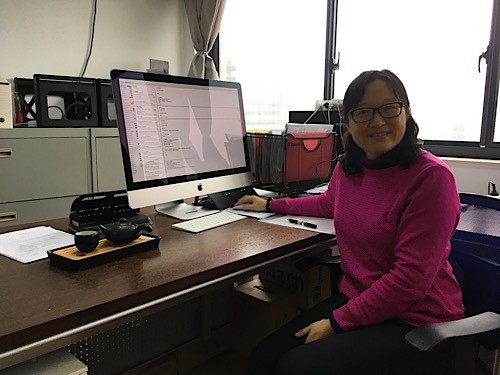
Lei Hao from the Shanghai Astonomical Observatory.
By Michael Banks in Shanghai, China
It was a cold, rainy day here in Shanghai, so coming from the UK, I felt right at home.
Jumping into a Shanghai taxi to avoid the downpour, I headed to the Shanghai Astronomical Observatory, belonging to the Chinese Academy of Sciences, to meet astronomer Lei Hao.
Hao studies the evolution of galaxies and active galactic nuclei, carrying out her research at a number of ground-based telescopes around the world.
The majority of her work is done on domestic telescopes. Indeed, China has built a number of observatories over the last couple of decades and that doesn’t look like it is going to stop anytime soon.
Hao is involved in an exciting new project to build a 12 m telescope in the country that would have an active programme for users to install their own instruments on the facility.
The biggest telescope in China to have a user instrument programme is the Yunnan Lijiang 2.4 m telescope, which is small compared with international facilities such as the 8.2 m Very Large Telescope in Chile and the twin 10 m Keck observatories in Hawaii.
Thanks to international agreements, researchers in China can apply for time on such international instruments but competition is fierce. “China needs its own instrument,” says Hao.
So Hao and colleagues are looking to do just that by proposing the 12 m Large Optical/infra-red Telescope (LOT). According to Hao, who is co-chair of the science advisory committee for the telescope, it “would put China at the forefront of observational capabilities”.
The idea for LOT passed a pre-selection process last year by the National Development and Reform Commission, but it has yet to be officially approved. If it goes ahead, then construction could begin in 2018 with the telescope opening in 2023 at a cost of around 1.5bn RMB.
Guidelines
Show/hide formatting guidelines
this text was deletedwhere people live in harmony with nature and animals</q>
Some text